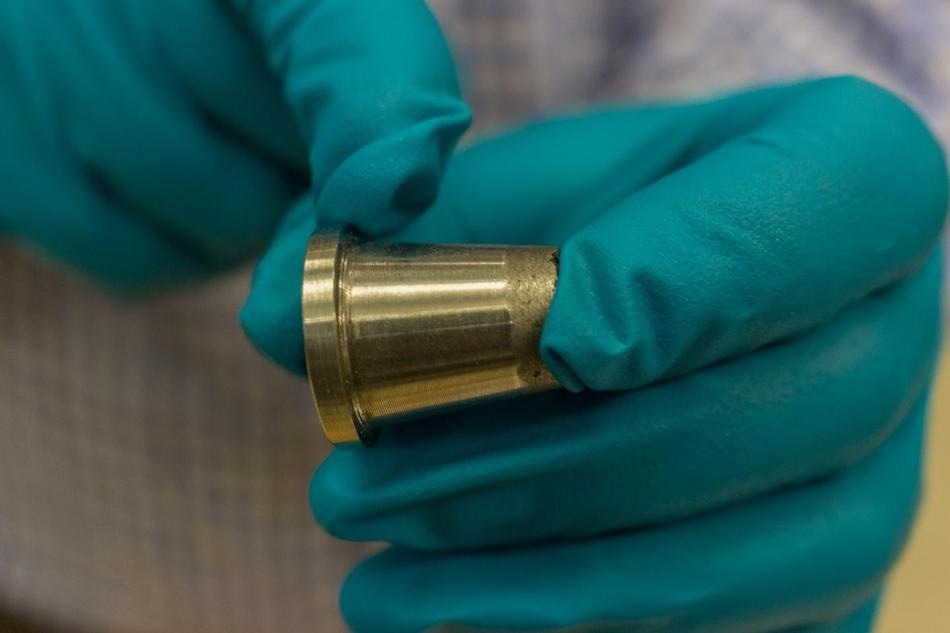May 31 2018
For the first time, a research team from Washington State University have used a one-step, three-dimensional (3D) printing process to print structures composed of two entirely different materials.
 Closeup of 3D printed multimaterial sample object (Credit: Washington State University)
Closeup of 3D printed multimaterial sample object (Credit: Washington State University)
This latest breakthrough could possibly allow manufacturers to reduce their production steps and employ a single machine to develop intricate products with multiple components in just one operation. To date, 3D printing, also called additive manufacturing, has been mostly restricted to using a single material at a time.
Headed by Amit Bandyopadhyay, Herman and Brita Lindholm Endowed Chair Professor in the School of Mechanical and Materials Engineering, the research team utilized 3D printing technology to print out ceramic and metal structures, and also a bimetallic tube that is nonmagnetic in one end and magnetic in the other. The results of the study have been reported in the May issue of Additive Manufacturing.
More precise, versatile product characteristics
3D printing has redefined a number of industrial practices and has considerably influenced the protocols of product design. Individuals who require a customized part can simply design that part on a computer and easily print it out.
Conversely, manufacturers can print parts by putting only a single material into a printer. The ability to use more than one material at a time will allow them to better control a range of properties like corrosion protection and heat conduction, and also control environmental adaptation in their materials.
This is a step towards the next level of manufacturing and the next generation of design, validation, optimization and manufacturing using 3D printing.”
Professor Amit Bandyopadhyay, Washington State University
Strength without adhesives
Moreover, once multimaterial, 3D printing is adopted, manufacturers will no longer have to use the joint connections or adhesives that are currently needed for producing multimaterial products.
You could be joining two very strong materials together, but their connection will only be as strong as their adhesive. Multimaterial, additive manufacturing helps get rid of the weak point.”
Professor Amit Bandyopadhyay, Washington State University
Using a laser-based 3D printer, the researchers, which also included graduate students Bonny Onuike and Bryan Heer, joined the materials in one step and then printed out a copper and nickel-chromium structure.
The nickel-chromium alloy Inconel 718 is used for sheet metal components for airplane engines and in liquid-fueled rockets. While this material can considerably endure high temperatures, it cools very gradually.
However, upon adding copper to the 3D printing process, the researchers found that the part could be cooled 250% faster which can ultimately translate to higher fuel efficiency and a longer life for airplane engines.
Increased design options
The researchers, in collaboration with graduate students Yanning Zhang and Tom Gualtieri, were also able to print metal-ceramic material in a single operation.
This allows us to vary the composition and add functionality to a product during 3D printing that is traditionally very difficult to achieve, and we can do this in a single process with a single machine.”
Professor Amit Bandyopadhyay, Washington State University
The Joint Center for Aerospace Technology Innovation, the National Science Foundation, and NASA’s Marshall Space Flight Center funded the study.